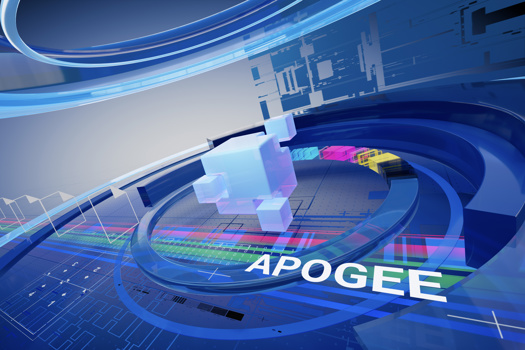What does it do?
This is a new multi-unit simplex sheetfed offset press from Heidelberg. The company’s official description is “a flexible and economical straight printing press in 50x70cm format”.
It’s intended as a more compact and lower-cost alternative to the flagship Speedmaster XL 75 press, with many common parts, but with a more restricted range of build options. It can be considered a hybrid between the XL and SX series.
The format is nominally B2 but an optional format of 605x750mm can handle long sheets for 6-up A4s, or packaging and label work.
When was it launched and what market is it aimed at?
The announcement was at China Print in Beijing during May. Shipping to the first customers will start in the autumn.
According to Heidelberg, “The 50x70cm format is still the ideal fit in terms of product range and sales volume for the many small and medium-sized print shops.”
The modern features of the CX 75 are intended to address the need for automation to reduce changeover times and wastage, while upping quality and repeatability.
The company predicts that it will suit “print shops that operate one or two shifts and are looking for an attractive price-performance ratio”.
How does it work?
The CX 75 is based on the XL 75 platform, with the same print units, cylinders, grippers, etc. Double diameter impression and transfer cylinders are used to eliminate marking.
At 2.8m wide it is the narrowest press in Heidelberg’s range of 50x70cm models. The use of some SX 74 components, including the suction head feeder, also help to reduce footprint and cost.
Matt Rockley, Heidelberg UK’s presses product specialist, says builds are more standardised, which also helps with the price. For instance there is no perfector option. There can be four, five or six units plus a coater.
“We monitor usage and have removed some features that we’ve found people don’t use very often,” says Rockley. “It’s more cost-effective for us to offer something that all markets can use, rather than extras only 20% might use. So for instance there isn’t air transfer for thicker sheets. However, customers can specify this if they want to take sheets up to 0.8mm.”
Autoplate semi-automatic plate-loading is fitted.
Instead of the XL’s Inpress colour controls here is a choice of Prinect Easy Control or Prinect Image Control, with an off-press spectrophotometer used to automatically adjust the press during the run.
“There is still a digital pre-inking software system,” says Rockley. “We say there will be sellable colour after 29 sheets with Color Assist controlling the ink ducts with pre-inking and de-inking.”
There’s a choice of conventional heat drying, plus a choice of Drystar UV curing units with LE or UV-LED lamps.
Pre-settings from the pre-press stage, for functions from the feeder to the delivery, can be integrated via Heidelberg’s Prinect pressroom network.
How fast/productive is it?
The top speed is 15,000sph. Productivity for short-run jobs is helped by the pre-setting features, which cut changeover times, including de- and pre-inking.
What is the USP?
It offers the print quality of the XL presses in a lower-cost, more compact package.
How easy is it to use?
Apart from the automation, the Prinect Press Center 2 control system features a separate control desk including a 19in flat screen with touch controls, plus a sheet viewing area with spectrophotometer measurement. “It’s very simple and easy to use,” says Rockley.
What training and support is on offer?
Heidelberg offers its usual training, service and support packages.
How much does it cost?
A four-unit model costs from £500,000.
How many are installed?
So far only a German test site has been announced (Werbedruck Petzold). Five CX 75s have now been ordered by printers in the UK, with deliveries due to start at year end.
SPECIFICATIONS
Units Up to six plus coater
Perfector option No
Max speed 15,000sph
Max sheet size 500x600mm, 605x750mm optional
Stock thickness range 0.03 to 0.8mm
Drying options Heat, LE UV, UV-LED
Footprint 11.6x2.8m for five units plus coater
Price From £500,000 for standard four-unit press
Contact Heidelberg UK 020 8490 3500 www.uk.heidelberg.com
ALTERNATIVES
KBA Rapida 75 Pro
The general purpose B2 model in KBA’s range, featuring double-size impression and transfer cylinders, and up to date automation. A range of conventional and UV driers is offered, including both on the same press.
Units Up to 10, or nine plus coater
Max speed 15,000sph (16,000sph optional)
Max sheet size 530x750mm (605x750mm optional)
Stock thickness range 0.04 to 0.6mm (max 0.5mm with perfecting) or max 0.8mm with board handling package
Price Typically €840,000 (about £760,340) for five-unit configurations
Contact KBA 01923 819922 www.kba-print.de/en
Komori Lithone G29 semi-automatic
Komori reckons this Lithrone is the nearest equivalent to the Heidelberg CX 75, with similar pricing and other features. The Enthrone 29, however, is more compact.
Units Two to eight
Max speed 16,500sph
Max sheet size 530x750mm
Stock thickness range 0.04-0.6mm (0.8mm optional)
Price From £500,000 for 5 units
Contact Komori Europe 0113 823 9200 sales@komori.co.uk
RMGT7 760
This B2 press is available in 79cm or compact 76cm configurations, the latter with built-in control panel. There are perfector options for both.
Units Two, four or five
Max print speed 13,000sph
Max sheet size 600x765mm
Stock thickness range 0.04 to 0.6mm (max 0.4mm when perfecting)
Price From £470,000 (5 unit version)
Contact Apex Digital Graphics 01442 235236 www.apexdigital.co.uk
USER REVIEW
“We wanted a universal press that could handle a wide range of grammages and finishing options that we could also optimally integrate into our digital workflow. The Speedmaster CX 75 is exactly the right press for our business model” 5/5
Ersin Sözer Managing director, Werbedruck Petzold, Gernsheim, Germany










